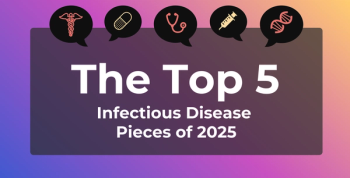
Dr Fumiko Chino: Medicaid Expansion Increases Cancer Mortality Benefit
The Affordable Care Act encourages preventive care, like cancer screenings, by eliminating copays, so that additional years will only see the number of lives saved grow, noted Fumiko Chino, MD, assistant attending radiation oncologist at Memorial Sloan Kettering Cancer Center in New York, in an interview prior to ASCO20 Virtual, this year’s annual meeting of the American Society of Clinical Oncology.
The Affordable Care Act encourages preventive care, like cancer screenings, by eliminating copays, so that additional years will only see the number of lives saved grow, noted Fumiko Chino, MD, assistant attending radiation oncologist at Memorial Sloan Kettering Cancer Center in New York, in an interview prior to ASCO20 Virtual, this year’s annual meeting of the American Society of Clinical Oncology.
Transcript:
In the United States, age-adjusted cancer-related deaths for patients younger than 65 decreased from 1999 to 2017 for 785 fewer deaths in 2017 alone. This equates to a 29% drop in Medicaid expansion states vs 25% in nonexpansion states. How would you describe this decrease to people who might not view these numbers as that impressive?
I think at first glance these numbers may not seem impressive, but I think any policy that can save about 800 lives a year can certainly have a profound effect over time. And additionally, I think this really, you know, really only estimates lives saved and it doesn't account for those patients with cancer whose lives are truly improved by timely access to care and decreased medical bills and improved treatment options that health insurance can provide. I also think it should be noted that our estimate was truly the most conservative method for calculating the benefit of the Affordable Care Act, and it's possible that the true benefit is higher or that the numbers themselves were increased over time, as we're still very early on in the timeline for seeing cancer mortality benefits from the Affordable Care Act.
Is it possible that the effects of different access to care will be cumulative and that some of the differences in cancer mortality will be the result of ongoing access resulting in more screenings and treatment for diabetes and obesity that result in cancer?
I think that's a really good point. And yeah, I think that improved access to health care has both direct and indirect effect on cancer mortality rates. And I think we can expect that with longer follow-up, we may see even greater differences between states that did and did not expand. You know, the Affordable Care Act has provisions, for example, for smoking cessation programs, that they should be covered without cost to patients for those people who have health insurance. And the downstream effects of quitting smoking are huge in terms of cancer survival.
The Affordable Care Act also encouraged preventative care, like cancer screenings, like mammography and colonoscopies. They encourage that by eliminating copays. So for example, a woman with a newly acquired Medicaid insurance would be able to have a free cancer-screening mammography, and the detection and treatment of an early-stage breast cancer for her is then curative. The time course for that same cancer to grow and spread and ultimately take her life is typically years. And so the fact that we saw a cancer mortality benefit only over the couple of years that we studied is pretty remarkable. And as I mentioned before, the additional years of follow-up, I think may show that this will only grow.
There is a disparity in the rate of access to care among the black, white, and Hispanic populations. While Hispanic patients so the biggest mortality benefit—2.1 per 100,000 individuals—there was significant baseline variability in their survival outcomes. Can you provide more insight?
Sure, you know when we plotted the yearly age-adjusted cancer mortality over time for the Hispanic population, we saw that the rates were very heterogeneous and that each year had a slight different result from the next, and that this was true especially when comparing the more constant curves from the other populations. And we do think that this has to do with a known poor access to health care in these patients, keeping in mind that to have mortality from cancer means that that person was actually diagnosed with cancer. And so that itself applies some sort of baseline access to health care, which may not be available in certain populations. So for example, a prior study has shown that Hispanic patients may have up to 3 times the rate of uninsurance as white patients, and so there are some members of that community that may be dying from cancer that we don't even know.
Newsletter
Stay ahead of policy, cost, and value—subscribe to AJMC for expert insights at the intersection of clinical care and health economics.







































